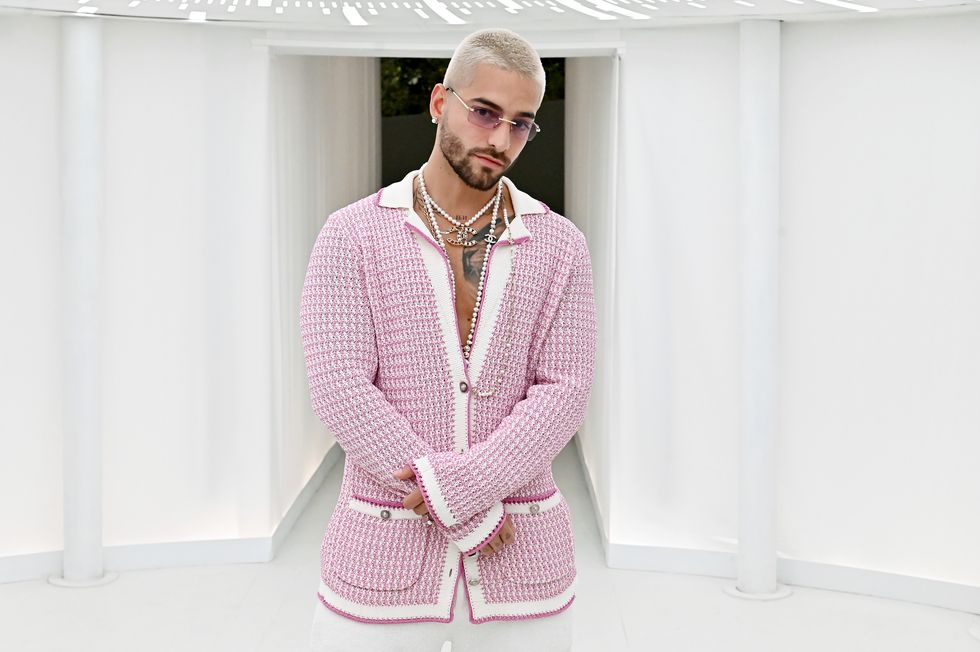In the realm of fashion, there exists a remarkable transformation unfolding—a narrative steeped in irony, where the legacy of a pioneering fashion icon, once a champion of women’s liberation through clothing, now witnesses men clamoring for the same sartorial empowerment. This tale revolves around none other than Gabrielle Chanel, whose indomitable spirit and vision reshaped the landscape of feminine elegance. Yet, in an unexpected twist, men now assert their freedom to embrace Chanel’s creations, marking a conquest of the last bastion of luxury that had long eluded them.
A Clash of Traditions and Modernity
Gabrielle Chanel, commonly known as Coco Chanel, stands as a towering figure in the annals of fashion history. Her eponymous fashion house, established in 1910, became synonymous with empowered femininity over the span of a century. However, the emergence of men as patrons of Chanel represents a departure from tradition, challenging established norms and perceptions within the realm of haute couture.
Inmaculada Urrea, a fashion consultant and author deeply immersed in Chanel’s legacy, offers insights into Coco Chanel’s hypothetical response to this contemporary phenomenon. Urrea suggests that while Chanel was a revolutionary figure in her time, defying sartorial conventions with her unisex designs as early as 1918, her views on gender roles remained conservative. Chanel famously asserted that women should dress to please and seduce men, reflecting a traditional mindset that clashed with her avant-garde approach to fashion. Urrea speculates that Chanel would have been incredulous at the prospect of men laying claim to her fashion legacy, viewing it as a departure from her original intent.
The Evolution of Chanel’s Menswear Aesthetic
Despite Chanel’s historical association with women’s fashion, the brand has not been immune to the shifting tides of contemporary culture. Karl Lagerfeld, the legendary creative director who helmed Chanel for decades, occasionally incorporated menswear elements into Chanel’s collections, albeit as accessories or embellishments rather than standalone pieces. Lagerfeld’s penchant for blurring the lines between masculine and feminine aesthetics foreshadowed the eventual emergence of men as patrons of Chanel.
However, Chanel’s foray into menswear remained tentative, with the brand steadfastly maintaining its focus on women’s fashion. Rumors of a potential collaboration with Hedi Slimane, the maverick designer known for his androgynous aesthetic, sparked speculation about Chanel’s foray into menswear. Yet, Chanel promptly refuted such claims, affirming its commitment to women’s couture.
The Rise of Male Ambassadors for Chanel
The intersection of celebrity culture and high fashion further propelled the masculinization of Chanel. Notable figures from the world of music and entertainment, including Pharrell Williams, Future, and Usher, embraced Chanel’s designs, lending their influence to redefine the brand’s image. Pharrell Williams, in particular, played a pivotal role in bridging the gap between luxury fashion and streetwear, introducing a new demographic to Chanel’s aesthetic.
The appointment of male ambassadors, such as Brad Pitt and G-Dragon, underscored Chanel’s evolving stance on gender representation within the fashion industry. These influential figures served as cultural arbiters, reshaping perceptions of masculinity and luxury consumption.
The Global Appeal of Chanel Menswear
While Chanel’s menswear offerings may not cater to a mass market, they hold significant appeal for discerning collectors and fashion enthusiasts. The allure of Chanel’s iconic tweed jackets and accessories transcends gender boundaries, attracting a diverse clientele from around the globe.
In Asia, in particular, Chanel’s menswear enjoys a devoted following, with influencers like Bryan Yambao, known as Bryanboy, championing the brand’s aesthetic. Yambao’s embrace of Chanel’s womenswear as a form of self-expression epitomizes the brand’s inclusive ethos, transcending traditional notions of gendered fashion.
Conclusion: Redefining Luxury in the Modern Era
The masculinization of Chanel represents more than a mere sartorial trend; it embodies a broader cultural shift towards gender fluidity and self-expression. As men assert their right to embrace traditionally feminine aesthetics, fashion houses like Chanel are compelled to adapt and evolve. In doing so, they redefine the boundaries of luxury, challenging preconceived notions of who can partake in the pursuit of sartorial excellence.
In the ever-evolving landscape of fashion, the legacy of Coco Chanel endures, transcending gender and generation. While she may have never envisioned men as patrons of her fashion empire, Chanel’s spirit of innovation and reinvention continues to resonate with contemporary audiences. As men embrace Chanel’s creations with newfound enthusiasm, they pay homage to a visionary whose impact transcends the constraints of time and tradition.
